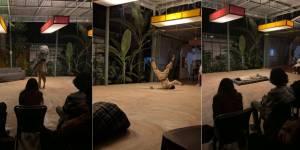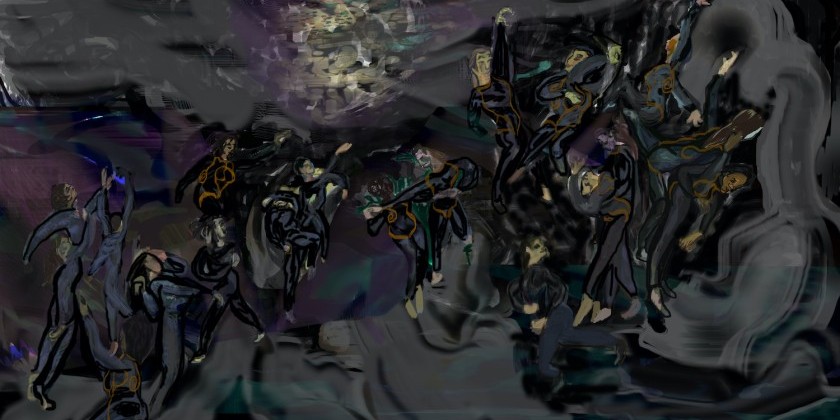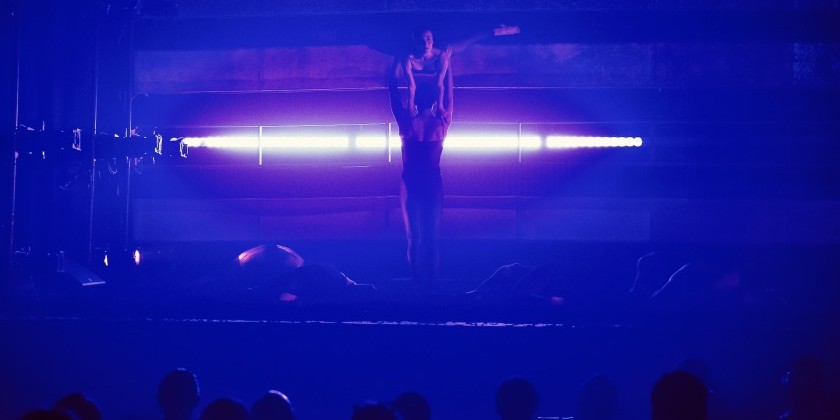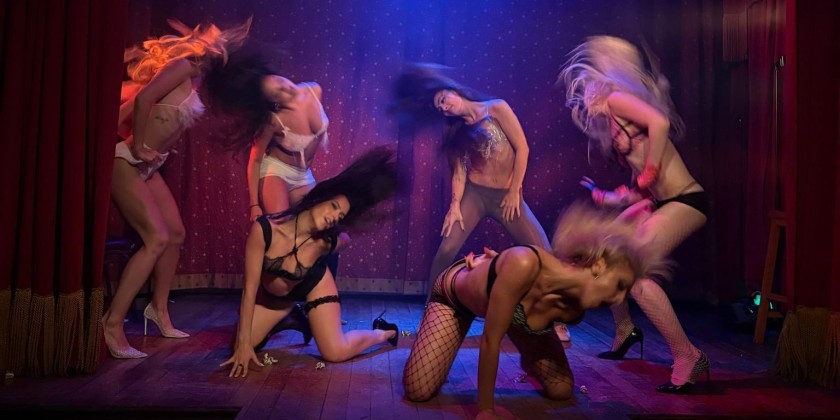AUDIENCE REVIEW: War, Sex, and Death: the Choreography of Ohad Naharin
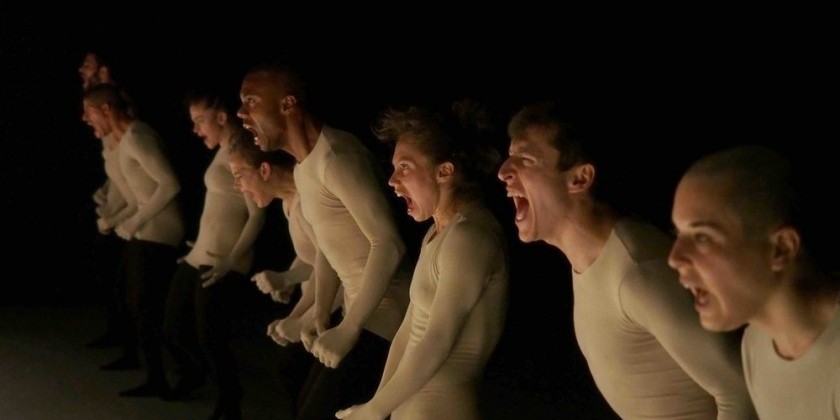
Company:
Batsheva: The Young Ensemble
Performance Date:
July 10, 2018
Freeform Review:
On July 10th of 2018, the Batsheva Young Ensemble performed Ohad Naharin’s piece
"Naharin’s Virus." The performance borrowed text from Peter Handke’s "Offending the
Audience," orated sporadically throughout the entire choreography by a man in a suit, standing
on a platform above the stage. The man asserts that the performers both represent and
demonstrate nothing. He asserts that this performance is not a play. His assertions only serve as
antithesis, providing the dancers an opportunity to rebel. This rebellion leads into the first of
many themes: war. The score behind the dance includes several Arabic songs, a clear nod to the
Israeli-Palestinian conflict. Furthermore, the manner in which the dancers flung themselves full
force at the chalk background, hanging on by their fingertips, evokes images of World War I, the
start of the Israel-Palestine conflict. Soldiers would engage in the tactic known as going over the
top, clambering out of the trenches to charge at enemy lines and most certain death. The dancers
charging at the blackboard created an eerily similar image. This alludes to another key theme in
Naharin’s Virus: death. A female dancer swings back and forth across the blackboard, holding
onto the arm of another performer on the platform. Their combined strength provides her enough
momentum do almost swing a full 180 degrees. After only a moment of kicking and laughing
and screaming, she is on the ground. The narrator then speaks to the audience, stating that,
statistically, someone is dying right now. The girls face is contorted in pain as she clutches at her
heart. He goes on to say that what the audience sees is not the representation of a death. Plays
represent death, and, according to the narrator, this is not a play. And yet, as another act of
rebellion, the girl collapses to the ground, her death as cataclysmic as it is obvious. Although this
particular phrase presents the most conspicuous representation of death, it remains as a constant
undercurrent. Manifest as the dancers, all present on stage, drop to the floor one by one. Manifest
in the narrator counting down from ten, each number punctuated by the frantic, fearful yells of a
female dancer. Although the words themselves were indistinguishable, the tone was not. They
spoke of death, of watching someone else die. To counter the elements of the end of life, Naharin
incorporated elements of what gives impetus to life: sex. The mere progression of the
performance mirrors sex. The slow build up of tension in the beginning, marked by the female
dancer outlining her partners in chalk as she oozes across the stage. The dance grows more
frantic and energetic throughout the piece, the dancers movements picking up in speed as well as
taking up more space. This tension is satisfactorily released at the finale, what could be referred
to as the climax of the performance, as the narrator speaks to the audience for the last time. After
repeatedly offending the audience, as well as himself, he concludes with “you are welcome here.
Good night.” This effectively releases the tension built up throughout the performance. Several
of the sexual elements were starkly overt, specifically the phrase when the microphone was
lowered into the audibly panting mouth of a female dancer. The almost dance-fight that used up
most of the stage space clearly represented an internal struggle with sexual identity. The repeated
use of the male dancers fighting to be positioned over the other gave this dance its sexual, as well
as aggressive, overtones.
The choreography of Ohad Naharin explored the defining moments of humanity from
varied perspectives. The entire performance presented the aftermath of being human. It left the
viewers with the painful awe manifested by war, the ache of death-borne grief, and the
borderline-uncomfortable haze created by two strangers enjoying each others bodies. Naharin’s
Virus infects the impetus for human action. It is the words we use daily but cannot define if
asked. It is the strangest chills we hold deep underneath the surface of our skin. We need no
vaccine. Only compassion.
Outside Sources:
Santo, Orli. "'We Represent Nothing' - Batsheva’s Youth Company Defies Qualification," The
can you feel New York Jewish Week, 13 July 2018, https://jewishweek.timesofisrael.com/ can you
feel can you batshevas-youth-company-performance-here-transcends-qualification/.
Author:
Scott Herron, Dance in the City Barnard Pre-College Program
Photo Credit:
"Naharin's Virus". Photo by Gadi Dagon.




